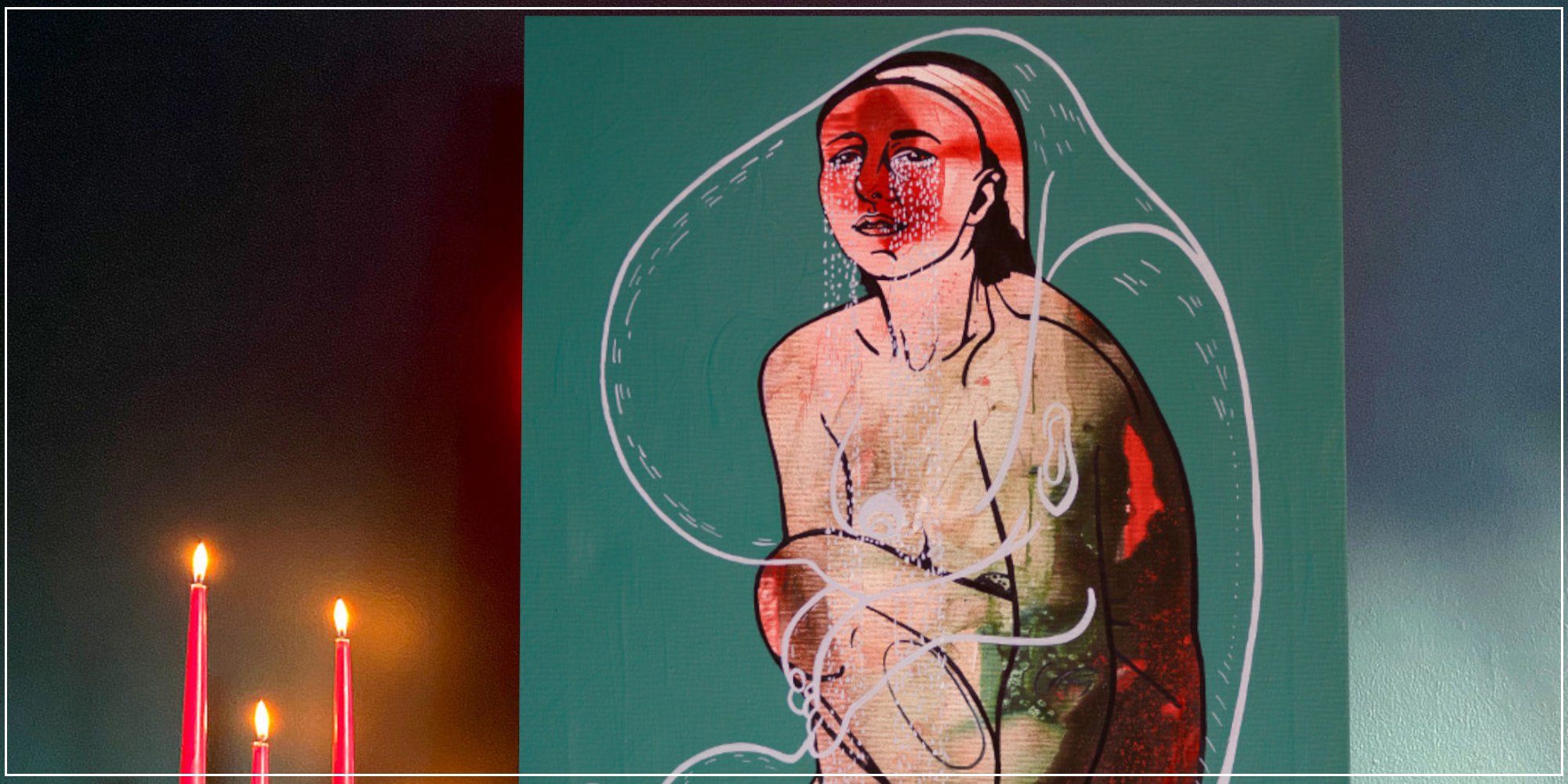When it comes to choosing the right artwork for your wall, size really does matter. We know how easy it is to fall in love with art online, so what’s next? Time to frame and hang your artwork pride of place in your home. However, did you know that there is a method to hanging wall art? And some basic maths—we know, bear with us, but we hope by the end of this blog, you will be able to confidently hang any artwork in your home.
Go big or go home
As a general rule of thumb, bigger is always better. When decorating, ideally you want to fill ⅔ or ¾ of available wall space with art. So, to avoid your walls overwhelming your choice of artwork or not drawing enough focus, going for a larger piece is the safer option. You also want to take into consideration the amount of exposed wall and how much furniture you have in a room. If it’s more sparse, then a larger artwork should do the space justice and fill the visual field that furniture would have. You can view our selection of large artworks here.
It’s also important to consider the height of your room. When choosing the right artwork for a wall, you want to take note of if the ceiling is high and calls for a large vertical orientation piece. Alternatively, for lower ceilings and therefore shorter walls (often found over sofas, in a hallway), a shorter piece with landscape orientation may be better suited. You may even be lucky enough to have a classically detailed cornice that screams for a grand oil painting in a fancy frame. Whatever the wall, opting for the larger artwork tends to be the best choice—which we particularly stress when buying modern, contemporary art to maximise the statement.
Where on the wall?
So, you’ve chosen your artwork and now you’re keen to get it on the wall. This is where numbers come into play, but we promise that it’s worth it!
When placing frames, particularly hanging art over furniture, such as a bed, a fireplace, or a couch, it should be between 2/3 to 3/4 of the width of the furniture. For instance, if your mantelpiece is 150cm wide, you should find a piece roughly 100cm to 112cm wide—but do remember to account for a few inches spare for the frame.
With choosing artwork for these specific locations, you also want to provide a little breathing room. Generally, this means hanging the work about 10cm to 30cm above the top of the piece of furniture. For a focal point artwork on a wall without furniture close by, you want to hang it at eye level, and for staircases, we suggest hanging a piece every third step for a staggered, diagonal look.
Gallery walls
If you prefer smaller artworks, or just want to have fun with a whole wall of art then a gallery wall might be for you. What is a gallery wall we hear you ask? It’s a curated collection of artwork clustered across a wall, or an aspect of a wall. Generally, these are smaller artworks with differing sizes and colours for maximum effect. You can view our selection of small artworks here.
A feature wall is also a great way to make a statement if you don’t have much wall space. For a better understanding of how to choose the right art for a gallery wall, see our blog post: How to build a contemporary gallery wall.
Finding the perfect fit
So, you have the right measurements and an empty wall screaming for a feature. Did you know that you are able to filter your search on Artfinder by dimensions? It’s super easy and a great way to ensure you are only viewing artwork that you know will fit in the space you have available.
We have a range of filters to aid you in your hunt. For dimensions, visit our main artwork page and simply click the ‘Size’ search filter (on the left-hand side) and select ‘Search custom size’. You are then able to drag the height and width toggles to the correct dimensions you're after.
However, do make sure you’re searching in the correct units—this can be altered on your regional settings (bottom of the page) by clicking ‘change my settings’ and editing the display units. If you ever have a query on the size or framing of an artwork, it's best to reach out to the artist for clarity.
Tips before you commit!
-
You may want to check how much wall space an artwork requires and if it will fit well in your space before committing to the nails! We suggest measuring up kraft paper to the size of your art (frame width taken into consideration) and using painter's tape to try it out on the walls.
-
Don’t hang small artworks up too high as they lose their effect, so make sure they’re close to eye level for maximum impact.
-
No matter the space, to keep all pieces in harmony, you want to hang larger artworks five to eight cm apart and small works two and a half to five cm apart.
-
If you want more information on how to choose the right artwork vibe for these spaces, you can check out our Colour Wheel blog post to ensure you’ve got your aesthetic down.
Finally, remember these are simply guidelines and your home should be a reflection of you—have fun decorating!
Words by Megan Keane
Header image credit: Tetiana Cherevan


